These cottage cheese flatbreads are as simple as it gets. Just 2 ingredients: cottage cheese and all-purpose flour (not self-rising) for deliciously tender flatbreads that are great for wraps, dips, or just warm off the pan. No eggs, no yeast.
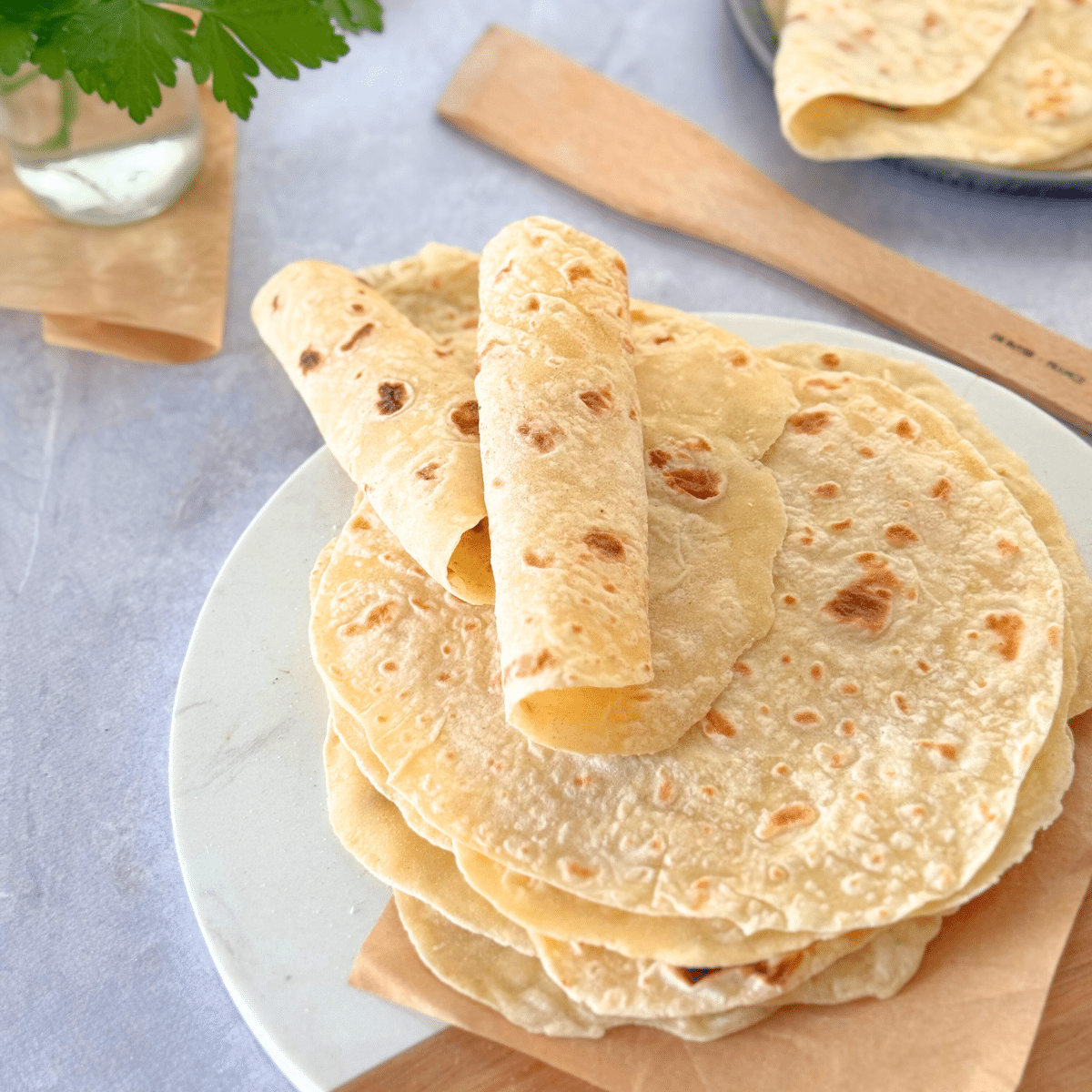
Any cottage cheese works
I tested this recipe separately with full-fat, low-fat, and fat-free cottage cheese. Each one worked perfectly, so you can use whatever you have or prefer.
Just make sure to stir and mash it with a fork first to break down the curds, it doesn’t need to be completely smooth, just soft enough to mix easily into the flour.
If your cottage cheese is very watery (curds floating in liquid or drippy when scooped), pour off a teaspoon or two of the excess liquid before mashing.
- Don’t use cream cheese, it’s too thick and dry for this dough.
Ingredient notes
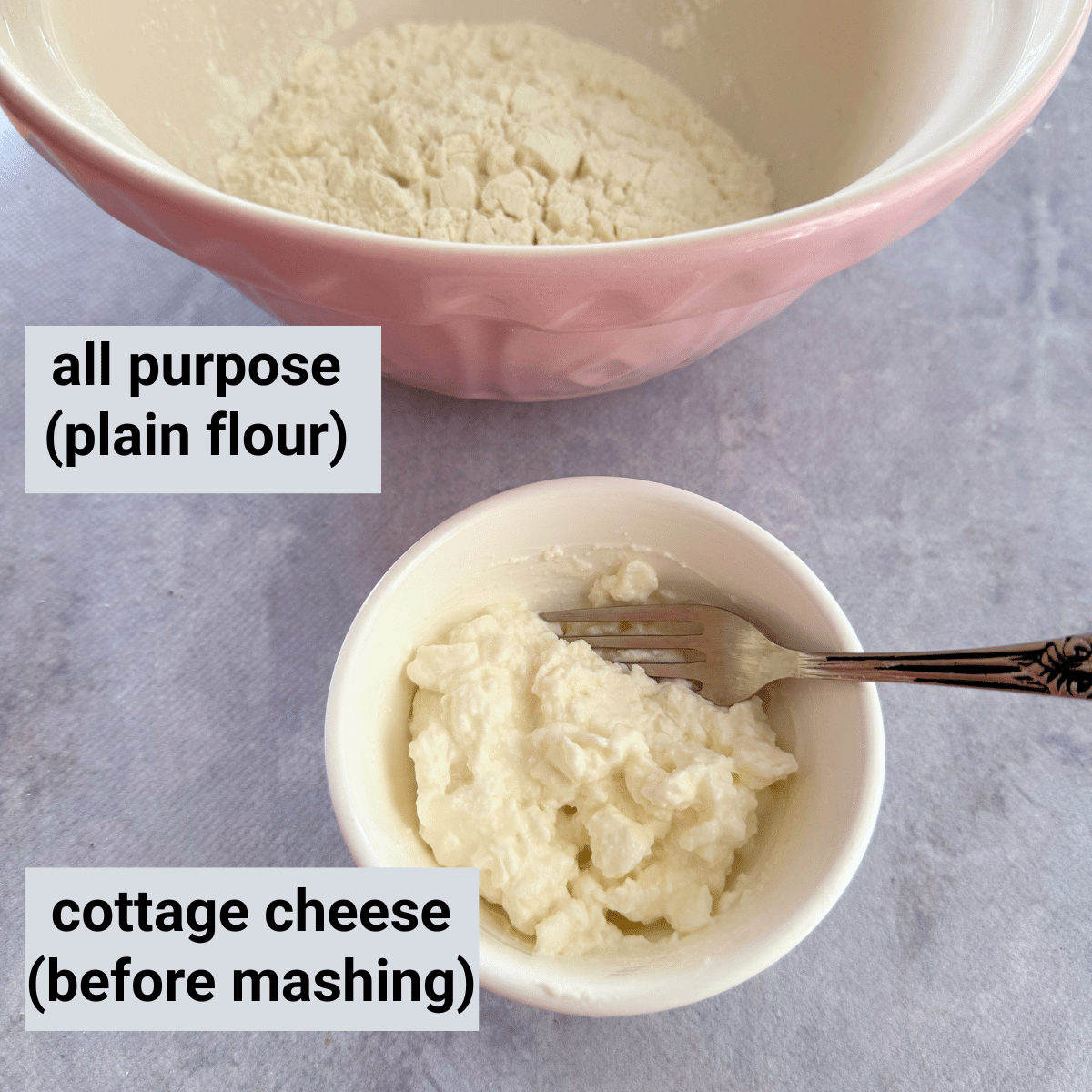
1 cup + 1 tablespoon cottage cheese (250 g)
- If the cottage cheese it’s very watery, you can pour off a little liquid first.
- Any kind works, full-fat, low-fat, or fat-free.
- Mash out chunks with a fork before using.
- It doesn’t have to be completely smooth, just soft enough to mix easily into the flour.
1¾ cups (220 g) all-purpose flour
- All-purpose flour works best.
- You can also use plain flour (if you're outside the US), but make sure it’s not self-rising.
- If measuring by cups, spoon the flour into the measuring cup and level it off with a knife.
Visual instructions
These visual instructions help you see the process. You can also find the full printable recipe with instructions and ingredients at the end of the post.
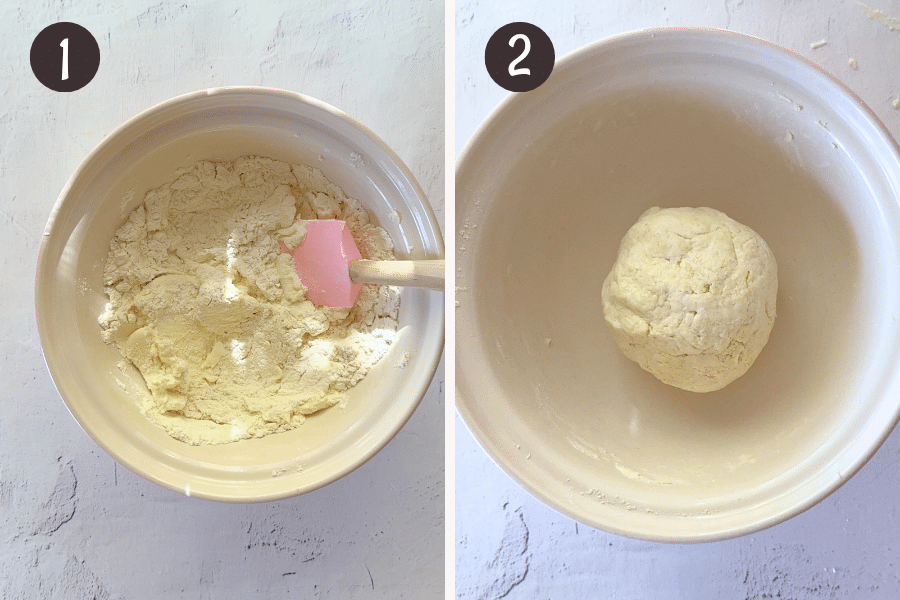
- Add the cottage cheese and flour to a large bowl. Stir until the mixture starts to mix together. It may look dry or a bit shaggy at first, that’s completely normal.
- Begin kneading the dough in the bowl.
- At first, the flour might seem like it’s not fully mixing in.
- Just keep gathering and pressing it together. The more you knead, the more the cottage cheese absorbs into the flour.
- After about 3 to 4 minutes of kneading, the dough will combine into a soft, smooth texture that’s easy to handle and doesn’t stick to your hands.
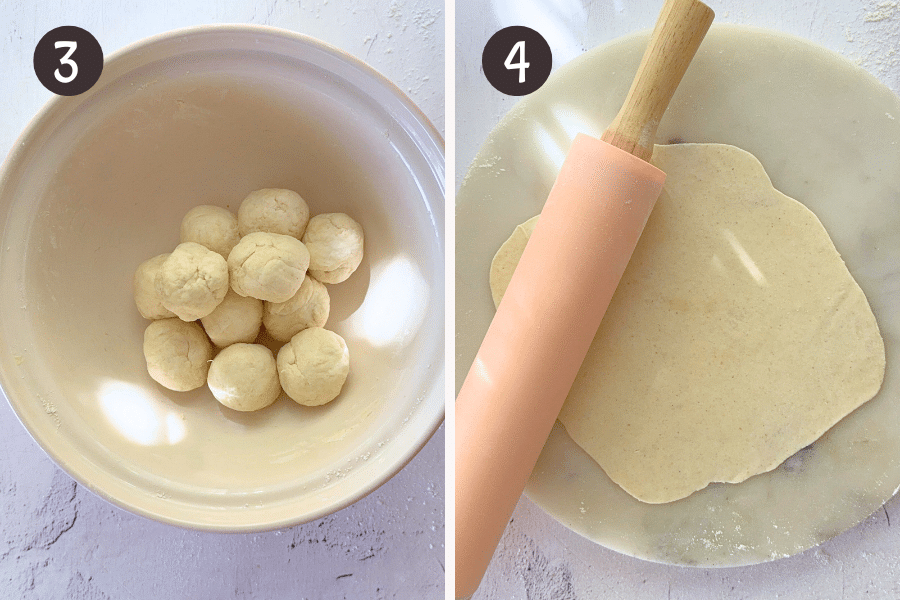
- Divide the dough into 10–12 equal pieces, (around 40–45 g) each if you want to be precise. Roll each one into a ball.
- Flatten each dough ball, then roll it out into a circle about 7 to 8 inches (18 to 20 cm) wide and around 2 to 3 mm thick (roughly ⅛ inch, about as thin as a soft tortilla). Lightly flour the surface if needed to keep it from sticking.
And if your ‘circle’ ends up looking more like a wonky oval or a weird little cloud like mine 😂, don’t worry, they still cook up perfectly delicious.
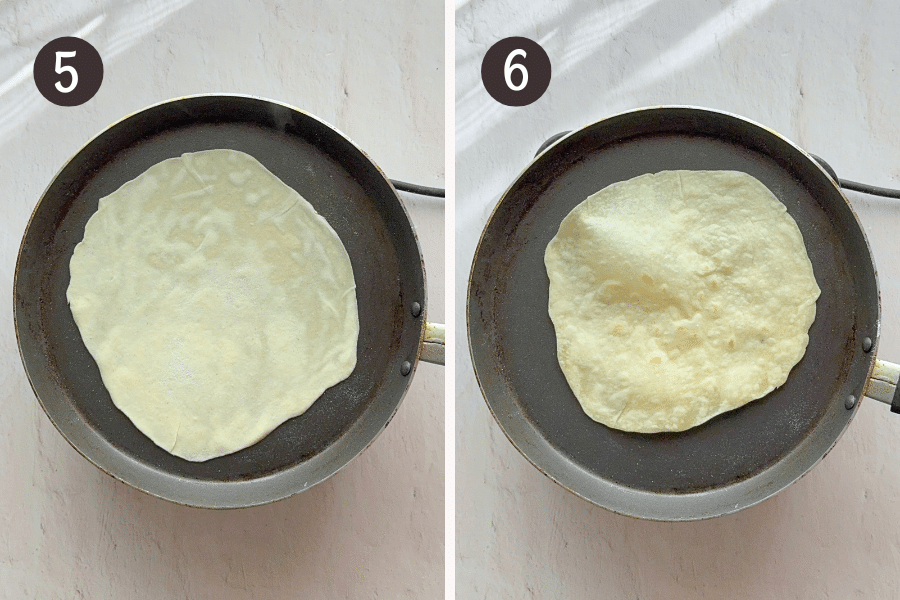
- Heat a dry nonstick or cast iron skillet over medium heat. Place a rolled-out flatbread in the hot pan and cook for about 1–2 minutes, until bubbles start to appear and the bottom gets light golden spots.
- Flip the flatbread and cook for another 1–2 minutes until both sides are golden and cooked through. As each one finishes, stack them on a plate and cover with a a double layer of paper towels or a kitchen towel to keep them soft while you cook the rest.
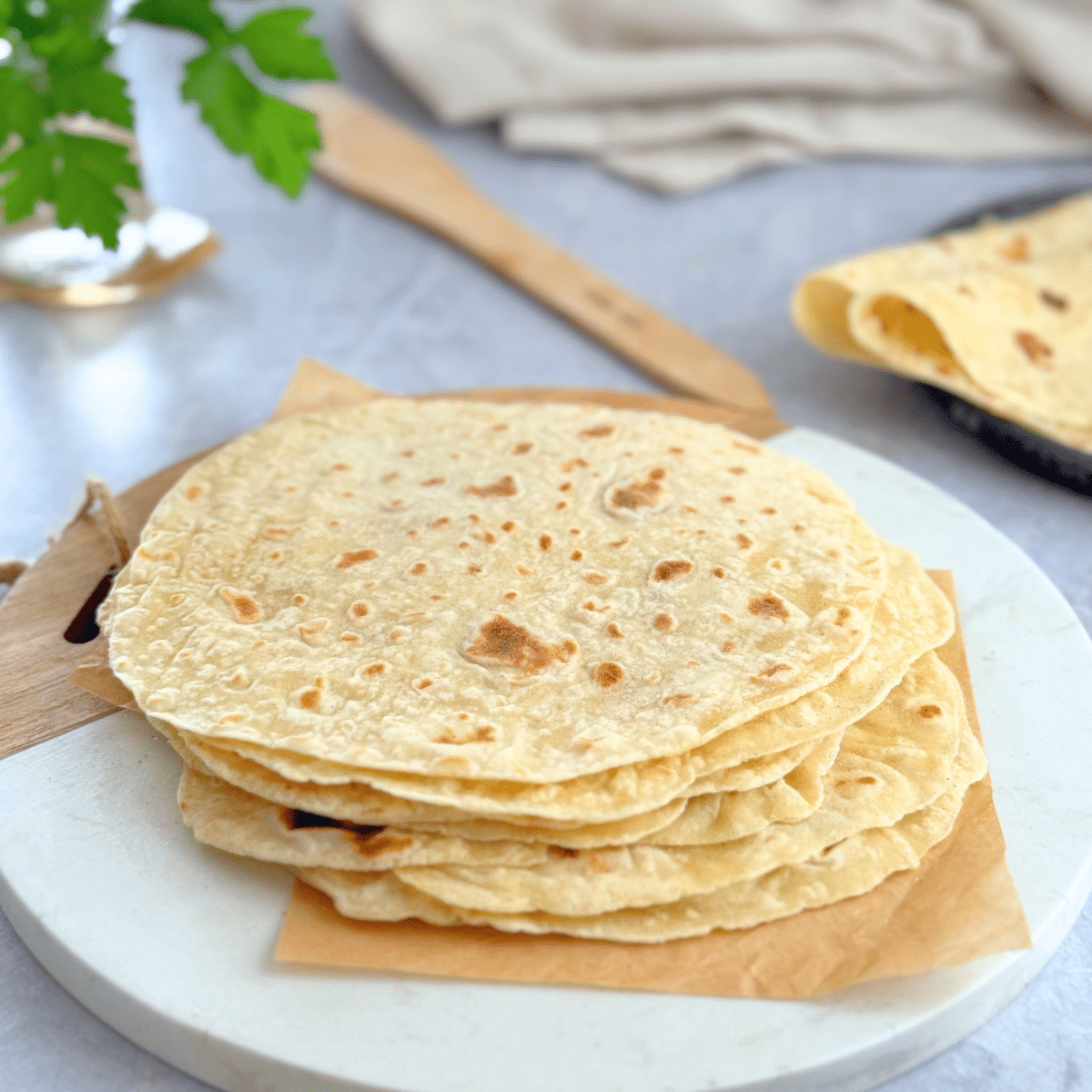
Storing your cooked flatbreads
Once they’ve cooled completely, here’s how to keep them soft and ready for snacking later
- Room temperature: Stack and store in an airtight container for up to 2 days. Great if you’re planning to use them soon.
- Refrigerator: Keep them in the fridge for up to 3 days. To reheat, pop one onto a dry skillet or toaster oven, this brings back the softness without drying them out.
- Freezer: Freeze cooked flatbreads in a stack with parchment between each one. Easy to seperate once frozen. Reheat straight from frozen in a dry pan or oven (no need to thaw first).
Recipe tips
- Don’t panic if the dough feels stiff at first. As you knead, the cottage cheese blends into the flour and softens everything up.
- Roll thin, but not paper thin. Around ⅛ inch (2 to 3 mm) is perfect. Think soft tortilla, not tissue paper thin
- Don’t overcook. You want golden spots, not crunchy flatbreads. If they start to go stiff, the pan's probably too hot.
- Keep them covered as you cook. Stack and cover each cooked flatbread with a clean kitchen towel or paper towel to keep them soft and pliable.
- Add flavor if you like. A pinch of garlic powder, herbs, or black pepper stirred into the flour makes these super versatile and easy to switch up every time you make them.
Want to try more easy flatbreads?
Here are a few that are just as simple and quick to make
Recipe
Watch how to make the recipe
- 1 cup + 1 Tablespoon cottage cheese (250 g)
- 1¾ cups all-purpose flour or plain flour (220 g)
- ¼ teaspoon salt (optional)
Mash out chunks in your cottage cheese with a fork first
- It doesn’t have to be completely smooth, just soft enough to mix easily into the flour.If your cottage cheese is very watery (curds floating in liquid or drippy), pour off a teaspoon or two of liquid before mashing.
Combine flour and mashed cottage cheese
- Add the mashed cottage cheese, flour, and salt (if using) to a large bowl. Stir until the mixture starts to come together. The dough may look dry or shaggy at first, this is normal.
- Knead the dough in the bowl for 3 to 4 minutes, until soft and smooth.
- At first, the flour might seem like it isn’t fully mixing in. Just keep gathering and pressing it together, the cottage cheese gradually absorbs the flour.
- After a few minutes, you’ll have a soft, smooth dough that’s easy to handle and doesn’t stick to your hands.
Divide dough, roll and cook
- Divide the dough into 10 to 12 equal pieces and roll each into a ball.
- Roll each ball into a circle about 7 to 8 inches (18 to 20 cm) wide and 2 to 3 mm thick (about ⅛ inch). (see notes)
- Lightly flour the surface if needed to prevent sticking.
- Heat a dry nonstick or cast iron skillet over medium heat.
- Cook each flatbread for 1 to 2 minutes per side, until golden spots appear and the flatbread is cooked through.
- Stack the cooked flatbreads on a plate and cover with a kitchen towel or paper towels to keep them soft while you finish the batch.
Storage
- Room temperature: Let cool completely. Store in an airtight container for up to 2 days.
- Refrigerator: Store in the fridge for up to 3 days. Reheat in a dry skillet or toaster oven.
- Freezer: Freeze cooked flatbreads in a stack with parchment between each. Reheat from frozen in a dry pan or oven, no need to thaw.
- If your cottage cheese is chunky, mash it with a fork before using.
- If it’s very watery (curds floating in liquid or drippy), pour off a teaspoon or two before mixing.
- Don’t use cream cheese, it’s too thick and dry for this dough.
But if it feels a little springy or hard to roll out, you can let it rest for 5 to 10 minutes, covered.
This gives the flour time to relax and makes rolling easier. Most of the time, it’s ready to roll right away.
If you use low-fat or fat-free, the values will vary slightly.
Hungry for more?
Sign up for my free newsletter to get emails about new recipes .And don't forget to follow me on YouTube, Facebook, Pinterest, and Instagram for all the latest deliciousness

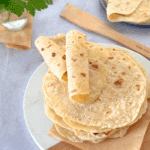


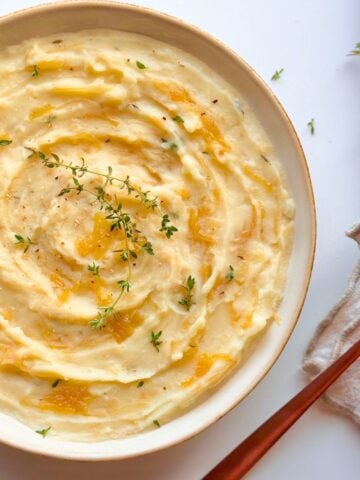

Leave a Reply